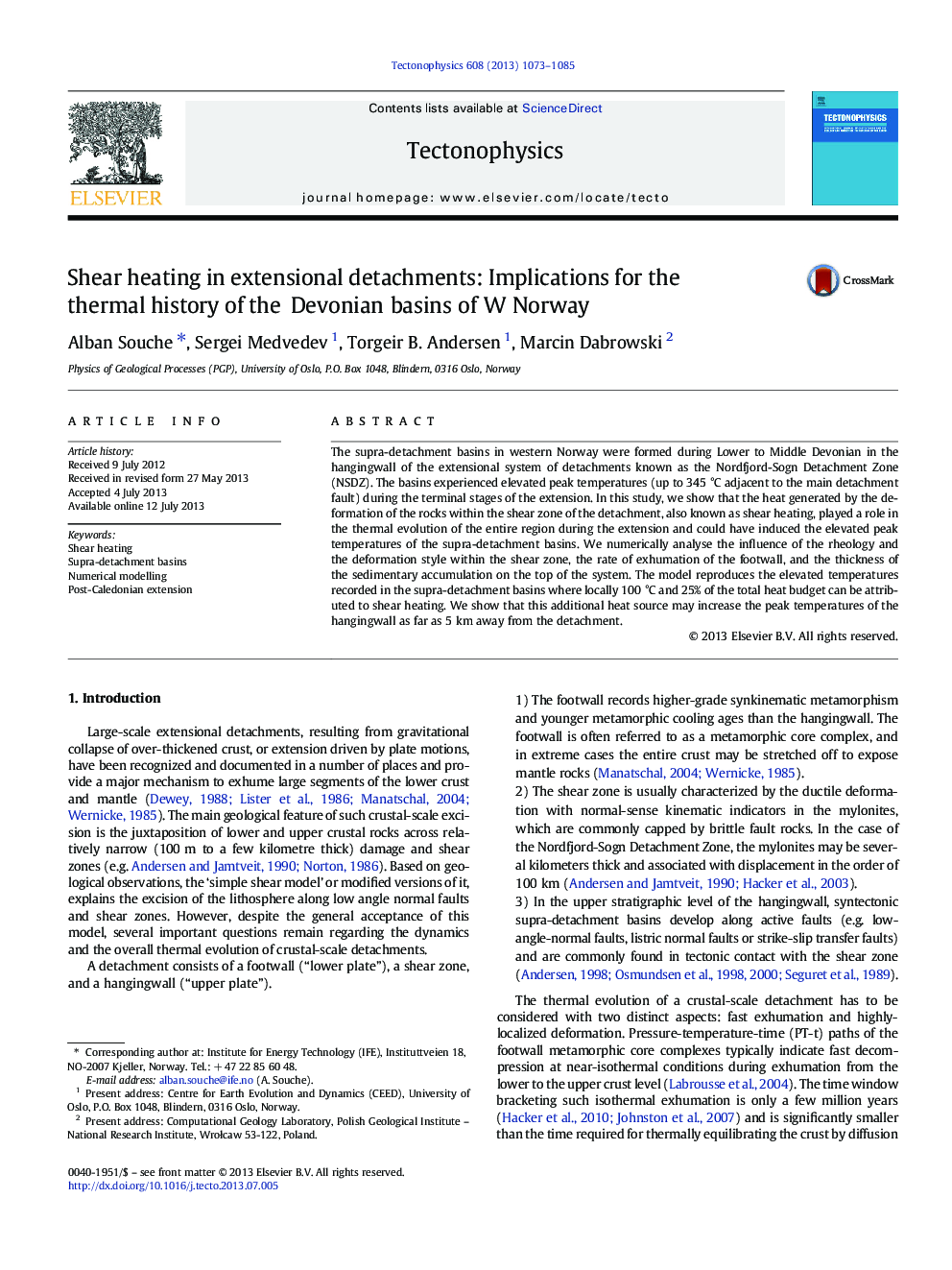| Article ID | Journal | Published Year | Pages | File Type |
|---|---|---|---|---|
| 6434039 | Tectonophysics | 2013 | 13 Pages |
â¢We model shear heating related to crustal-scale extensional shear zones.â¢The model was used for the Nordfjord-Sogn Detachment Zone.â¢The temperature increase may be up to 100 °C within the detachment shear zone.â¢Shear heating can contribute to 25% of the thermal budget of supra-detachment basins.
The supra-detachment basins in western Norway were formed during Lower to Middle Devonian in the hangingwall of the extensional system of detachments known as the Nordfjord-Sogn Detachment Zone (NSDZ). The basins experienced elevated peak temperatures (up to 345 °C adjacent to the main detachment fault) during the terminal stages of the extension. In this study, we show that the heat generated by the deformation of the rocks within the shear zone of the detachment, also known as shear heating, played a role in the thermal evolution of the entire region during the extension and could have induced the elevated peak temperatures of the supra-detachment basins. We numerically analyse the influence of the rheology and the deformation style within the shear zone, the rate of exhumation of the footwall, and the thickness of the sedimentary accumulation on the top of the system. The model reproduces the elevated temperatures recorded in the supra-detachment basins where locally 100 °C and 25% of the total heat budget can be attributed to shear heating. We show that this additional heat source may increase the peak temperatures of the hangingwall as far as 5 km away from the detachment.
